Meta-Analysis of the Associations of p-Cresyl Sulfate (PCS) and Indoxyl Sulfate (IS) with Cardiovascular Events and All-Cause Mortality in Patients with Chronic Renal Failure
- PMID: 26173073
- PMCID: PMC4501756
- DOI: 10.1371/journal.pone.0132589
Meta-Analysis of the Associations of p-Cresyl Sulfate (PCS) and Indoxyl Sulfate (IS) with Cardiovascular Events and All-Cause Mortality in Patients with Chronic Renal Failure
Abstract
Background: Indoxyl sulfate (IS) and p-cresyl sulfate (PCS) are protein-bound uremic toxins that increase in the sera of patients with chronic kidney disease (CKD), and are not effectively removed by dialysis. The purpose of this meta-analysis was to investigate the relationships of PCS and IS with cardiovascular events and all-cause mortality in patients with CKD stage 3 and above.
Methodology/principle findings: Medline, Cochrane, and EMBASE databases were searched until January 1, 2014 with combinations of the following keywords: chronic renal failure, end-stage kidney disease, uremic toxin, uremic retention, indoxyl sulfate, p-cresyl sulfate. Inclusion criteria were: 1) Patients with stage 1 to 5 CKD; 2) Prospective study; 3) Randomized controlled trial; 4) English language publication. The associations between serum levels of PCS and IS and the risks of all-cause mortality and cardiovascular events were the primary outcome measures. Of 155 articles initially identified, 10 prospective and one cross-sectional study with a total 1,572 patients were included. Free PCS was significantly associated with all-cause mortality among patients with chronic renal failure (pooled OR = 1.16, 95% CI = 1.03 to 1.30, P = 0.013). An elevated free IS level was also significantly associated with increased risk of all-cause mortality (pooled OR = 1.10, 95% CI = 1.03 to 1.17, P = 0.003). An elevated free PCS level was significantly associated with an increased risk of cardiovascular events among patients with chronic renal failure (pooled OR = 1.28, 95% CI = 1.10 to 1.50, P = 0.002), while free IS was not significantly associated with risk of cardiovascular events (pooled OR = 1.05, 95% CI = 0.98 to 1.13, P = 0.196).
Conclusions/significance: Elevated levels of PCS and IS are associated with increased mortality in patients with CKD, while PCS, but not IS, is associated with an increased risk of cardiovascular events.
Conflict of interest statement
Figures
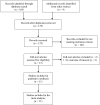
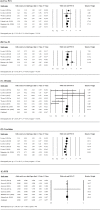
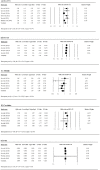
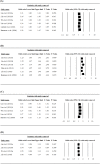
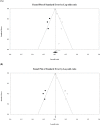
Similar articles
-
Gastrointestinal-related uremic toxins in peritoneal dialysis: a pilot study with a 5-year follow-up.Arch Med Res. 2013 Oct;44(7):535-41. doi: 10.1016/j.arcmed.2013.09.007. Epub 2013 Sep 19. Arch Med Res. 2013. PMID: 24055267
-
Uraemic toxins and cardiovascular disease across the chronic kidney disease spectrum: an observational study.Nutr Metab Cardiovasc Dis. 2014 Sep;24(9):1035-42. doi: 10.1016/j.numecd.2014.04.006. Epub 2014 May 4. Nutr Metab Cardiovasc Dis. 2014. PMID: 24880738
-
Effects of AST-120 on blood concentrations of protein-bound uremic toxins and biomarkers of cardiovascular risk in chronic dialysis patients.Blood Purif. 2014;37(1):76-83. doi: 10.1159/000357641. Epub 2014 Feb 22. Blood Purif. 2014. PMID: 24576840
-
The uremic toxicity of indoxyl sulfate and p-cresyl sulfate: a systematic review.J Am Soc Nephrol. 2014 Sep;25(9):1897-907. doi: 10.1681/ASN.2013101062. Epub 2014 May 8. J Am Soc Nephrol. 2014. PMID: 24812165 Free PMC article. Review.
-
Vascular incompetence in dialysis patients--protein-bound uremic toxins and endothelial dysfunction.Semin Dial. 2011 May-Jun;24(3):327-37. doi: 10.1111/j.1525-139X.2011.00925.x. Semin Dial. 2011. PMID: 21682773 Review.
Cited by
-
Identification of serum biomarkers for chronic kidney disease using serum metabolomics.Ren Fail. 2024 Dec;46(2):2409346. doi: 10.1080/0886022X.2024.2409346. Epub 2024 Oct 8. Ren Fail. 2024. PMID: 39378112 Free PMC article.
-
Metabolomic profile of cerebrospinal fluid from patients with diffuse gliomas.J Neurol. 2024 Oct;271(10):6970-6982. doi: 10.1007/s00415-024-12667-9. Epub 2024 Sep 3. J Neurol. 2024. PMID: 39227460 Free PMC article.
-
A Systematic Review of Uremic Toxin Concentrations and Cardiovascular Risk Markers in Pediatric Chronic Kidney Disease.Toxins (Basel). 2024 Aug 8;16(8):345. doi: 10.3390/toxins16080345. Toxins (Basel). 2024. PMID: 39195755 Free PMC article.
-
Endothelial dysfunction: molecular mechanisms and clinical implications.MedComm (2020). 2024 Jul 22;5(8):e651. doi: 10.1002/mco2.651. eCollection 2024 Aug. MedComm (2020). 2024. PMID: 39040847 Free PMC article. Review.
-
The Role of Gut Microbiota in the Etiopathogenesis of Multiple Chronic Diseases.Antibiotics (Basel). 2024 Apr 25;13(5):392. doi: 10.3390/antibiotics13050392. Antibiotics (Basel). 2024. PMID: 38786121 Free PMC article. Review.
References
-
- Vanholder R, Massy Z, Argiles A, Spasovski G, Verbeke F, Lameire N; European Uremic Toxin Work Group. Chronic kidney disease as cause of cardiovascular morbidity and mortality. Nephrol Dial Transplant. 2005;20: 1048–1056. - PubMed
-
- Weiner DE, Tighiouart H, Amin MG, Stark PC, MacLeod B, Griffith JL, et al. Chronic kidney disease as a risk factor for cardiovascular disease and all-cause mortality: a pooled analysis of community-based studies. J Am Soc Nephrol. 2004;15: 1307–1315. - PubMed
-
- Levin A, Foley RN. Cardiovascular disease in chronic renal insufficiency. Am J Kidney Dis. 2000;36: S24–S30. - PubMed
-
- Longenecker JC, Coresh J, Powe NR, Levey AS, Fink NE, Martin A, et al. Traditional cardiovascular disease risk factors in dialysis patients compared with the general population: the CHOICE Study. J Am Soc Nephrol. 2002;13:1918–1927. - PubMed
-
- Clarke R, Daly L, Robinson K, Naughten E, Cahalane S, Fowler B, et al. Hyperhomocysteinemia: an independent risk factor for vascular disease. N Engl J Med. 1991; 324: 1149–1155. - PubMed
Publication types
MeSH terms
Substances
Grants and funding
LinkOut - more resources
Full Text Sources
Other Literature Sources
Medical

